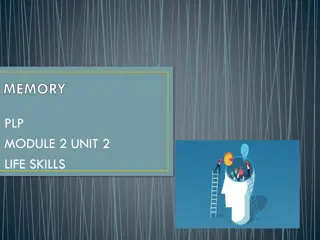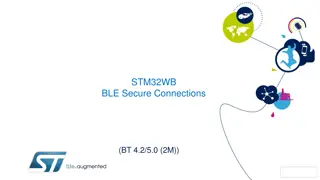Enhancing Memory Security with H2ORAM and Secure Memory Techniques
Explore cutting-edge research in memory security with topics such as H2ORAM optimization for hybrid memory systems, secure memory principles, Oblivious-RAM for data protection, Path ORAM storage structures, Ring ORAM for read paths, and the application of ORAM in hybrid memory architectures. These advancements aim to safeguard sensitive data from potential threats and ensure efficient memory access with low response latency.
Uploaded on Sep 23, 2024 | 0 Views
Download Presentation

Please find below an Image/Link to download the presentation.
The content on the website is provided AS IS for your information and personal use only. It may not be sold, licensed, or shared on other websites without obtaining consent from the author. Download presentation by click this link. If you encounter any issues during the download, it is possible that the publisher has removed the file from their server.
E N D
Presentation Transcript
H2ORAM: Low Response Latency Optimized ORAM for Hybrid Memory Systems Wenpeng He, Fang Wang, Dan Feng School of Computer Science and Technology, Wuhan National Laboratory for Optoelectronics Huazhong University of Science and Technology ICCD 2020
Secure Memory Secure Memory1 Cloud User Encrypted Data Adversary Snoop Trusted Memory Bus Untrusted Untrusted 2
Secure Memory Secure Memory1 Data is safe! Cloud User Encrypted Data Oblivious-RAM (ORAM) is a mechanism for protecting memory access patterns Adversary Snoop Trusted Memory Bus Untrusted Untrusted Memory access pattern can leak! 3
Path ORAM Path ORAM 9 Real Block Data blocks stored in a full binary tree Dummy Block Each node is a bucket that can contain several blocks There is one path from root to each leaf node Bucket Each data block is randomlymapped to a path Tree contains both real and dummy blocks A A fraction of tree is always dummy Leaf 0 Leaf 1 Leaf 2 Leaf 3 Path 0 4
Path ORAM Access Path ORAM Access 9 Access A 1 Read path Write path 3 requires 2 path accesses A Leaf 0 Leaf 1 Leaf 2 Leaf 3 ORAM Tree (memory side) ORAM Controller (CPU side) On-chip PosMap Position Map Block A Path 0 Stash PLB Remap Block 2 5
Ring ORAM Ring ORAM Read Path Add S reserved dummy slots, permute buckets Read Path reads only 1 block per bucket One block of interest + dummy from other buckets To do so, it keeps metadata of blocks at each bucket and prior to each Read Path it reads the metadata to know exact location of real and dummy blocks in each bucket Early Reshuffle Reshuffle and rewrite each bucket that is accessed S times Evict Path After each A (e.g. 5) accesses, it reads and writes an entire path to reduce stash occupancy This operation is similar to a regular access in Path ORAM 6
ORAM in Hybrid Memory ORAM in Hybrid Memory 7
H2ORAM Optimization LFUP-Aging least frequently used blocks are preferred for eviction Mask Slots Duplicate leaves into DRAM dummies Mix dynamically adjust the number of real/duplicate blocks 8
Results Results The DRAM hit ratio is increased from 36% in the Hybrid to 72% in the Mix 9
Results Results Response Latency Reduction LFUP 4% Mask 16% Mix 44% Overall Exe time Reduction LFUP 2% Mask 7% Mix 18% 10























